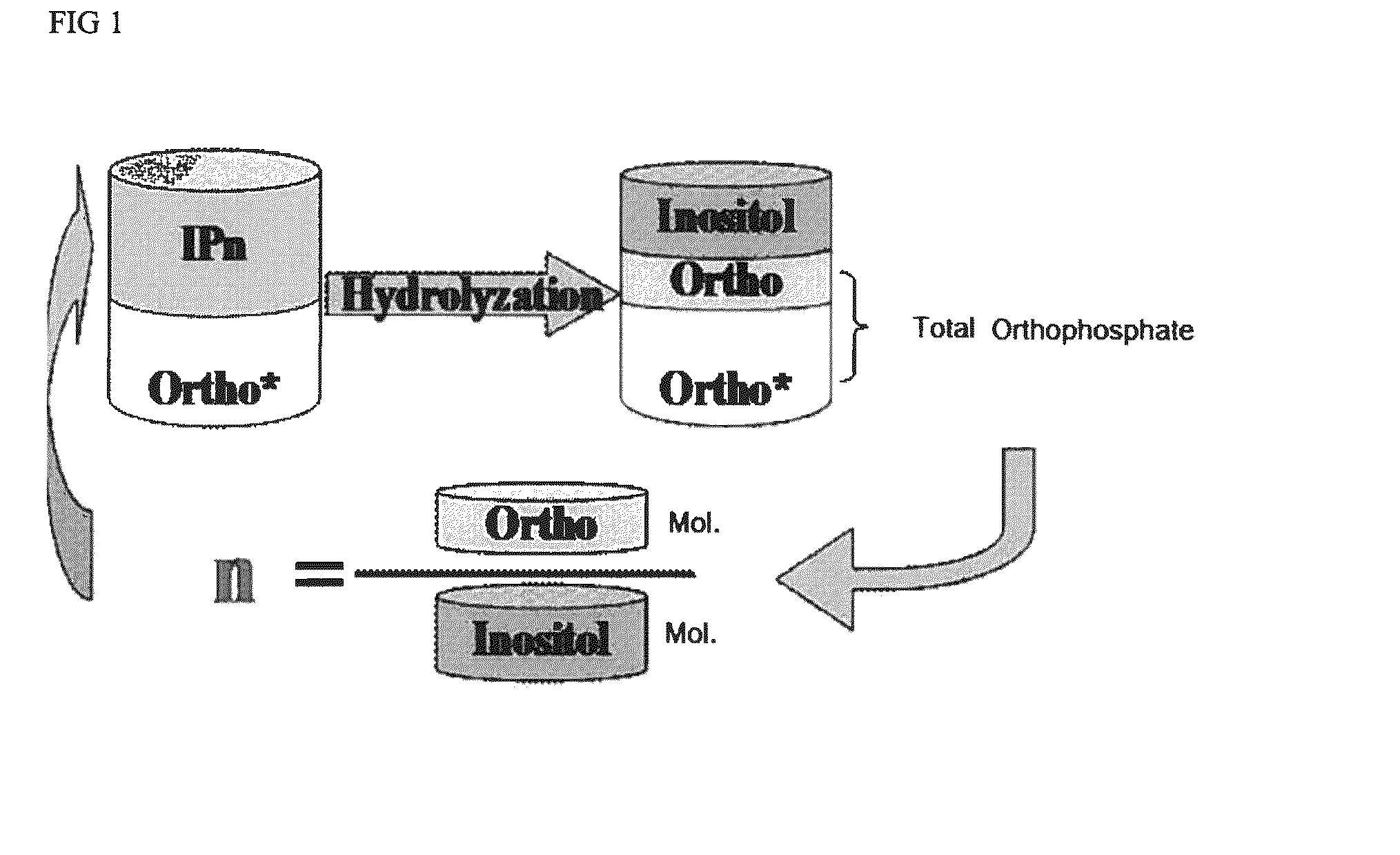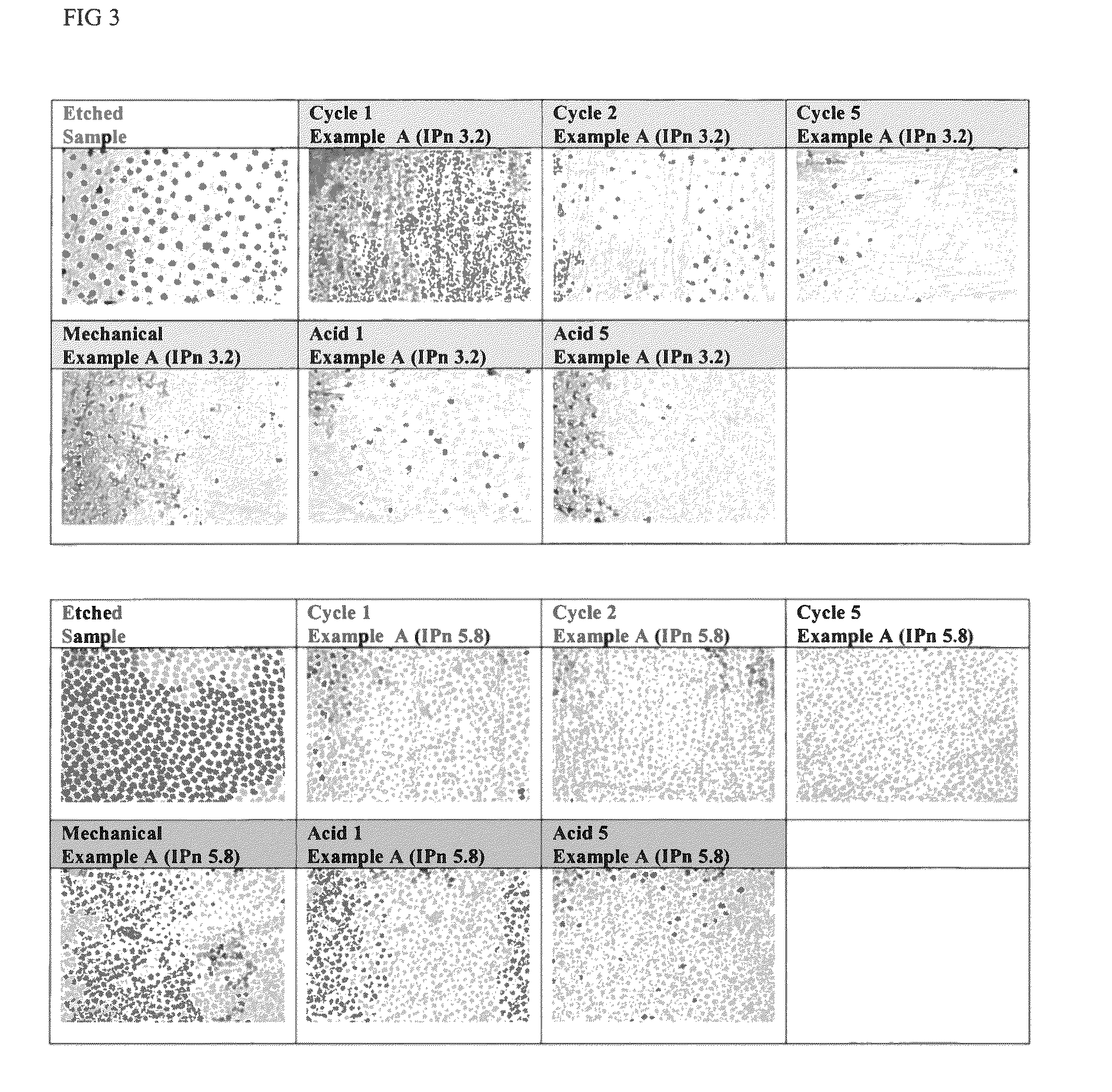Oral care compositions comprising phytic acid
a technology of oral care and compositions, applied in the field of oral care compositions, can solve the problems of incompatibility of stannous and zinc with other actives, astringent properties, etc., and achieve the effect of high level, and reducing the risk of infection
- Summary
- Abstract
- Description
- Claims
- Application Information
AI Technical Summary
Benefits of technology
Problems solved by technology
Method used
Image
Examples
example 1
Formulations
[0050]The following examples further describe and demonstrate toothpaste embodiments within the scope of the present invention. These examples are given solely for the purpose of illustration and are not to be construed as limitations of the present invention as many variations thereof are possible.
[0051]Toothpaste compositions according to the present invention are shown below with amounts of components in weight %. These compositions are made using conventional methods.
[0052]
TABLE 1FormulationsIngredientABCDEFSorbitol sol. (70%)40.570 40.570 40.500 40.500 30.000 54.884 Phytic acid0.800—0.8000.800——Avg IPn 3.2Phytic acid—0.800————Avg IPn 5.8Zinc Citrate0.5330.533————Zinc Lactate——0.788———Stannous Fluoride———0.454Sodium Fluoride0.3210.3210.243—0.3210.454Trisodium Orthophosphate 6- Hydrate————0.366—Sodium Gluconate1.0641.064—1.064—2.082Stannous Chloride1.1601.160———1.500Hydroxy Ethyl Cellulose0.3000.3000.3000.3000.500Sodium Carboxy Methyl Cellulose1.3001.3001.3001.3001.10...
example 2
Calculation of IPn
[0053]Phytic acid can be hydrolyzed to inositol and phosphate. Free orthophosphate (identified as “free orthophosphate”, yellow Ortho* in FIG. 1) is measured using before acid hydrolysis. Phosphate in phytic acid reacts with ammonium molybdate-ammonium metavanadate solution to deliver a yellow colour. The quantity of free orthophosphate in phytic acid is measured by testing the intensity of the yellow colour by UV-Vis spectroscopy at 420 nm. Inositol and total orthophosphate are measured after hydrolysis using standard ion chromatography techniques. The difference between total orthophosphate and free orthophosphate is the phosphate degraded from phytic acid and other phosphorylated inositols (IPx) (identified as “organic orthophosphate, the pink Ortho in FIG. 1). The molar ratio of organic phosphate and inositol represents the average substitution of phytic acid (Avg. IPn) which is calculated as follows:
[0054]n=(Totalorthophosphate%-Freeorthophosphate%) / 95...
example 3
Calculation of Soluble Ions
Soluble Tin
Preparation of Tin (Sn) Standard Solution, 100 μg / mL
[0056]Pipette 10 mL of the Tin stock standard solution (1000 μg / mL) into an 100 mL volumetric flask containing 30 mL of 6M HCl solution. Dilute to volume with water, cap and shake well to mix. This solution contains 100 μg / mL (ppm) Sn. Larger volumes can be prepared by making the appropriate adjustments to the reagents. The tin standard solution is stable for 1 week at room temperature.
Preparation of Blank Solution for Measurements
[0057]Add 30 mL of 6M HCl solution into an 100 mL volumetric flask. Dilute to volume with water, cap and shake well to mix. Larger volumes can be prepared by making the appropriate adjustments to the reagents.
Preparation of Sn Slurry Sample
[0058]Into a 50 ml centrifuge tube, weigh 3 g±0.01 g composition and 9 g±0.01 g deionised (DI) water. Add 6 glass balls and cap. Vortex for 2 minutes, then centrifuge for 15 mins at 15000 rpm.
Sample Solution
[0059]Weigh 2.990-3.010 g...
PUM
| Property | Measurement | Unit |
|---|---|---|
| particle size | aaaaa | aaaaa |
| particle size | aaaaa | aaaaa |
| volume | aaaaa | aaaaa |
Abstract
Description
Claims
Application Information
 Login to View More
Login to View More - R&D
- Intellectual Property
- Life Sciences
- Materials
- Tech Scout
- Unparalleled Data Quality
- Higher Quality Content
- 60% Fewer Hallucinations
Browse by: Latest US Patents, China's latest patents, Technical Efficacy Thesaurus, Application Domain, Technology Topic, Popular Technical Reports.
© 2025 PatSnap. All rights reserved.Legal|Privacy policy|Modern Slavery Act Transparency Statement|Sitemap|About US| Contact US: help@patsnap.com



